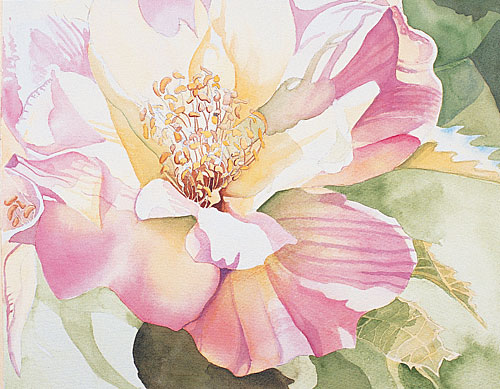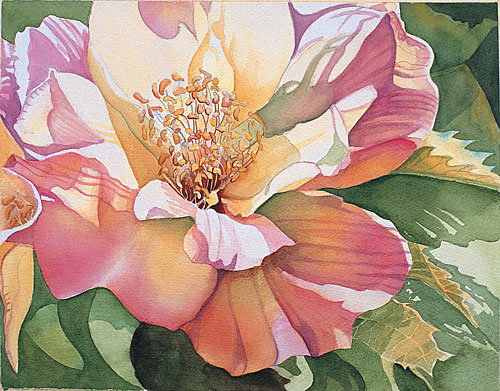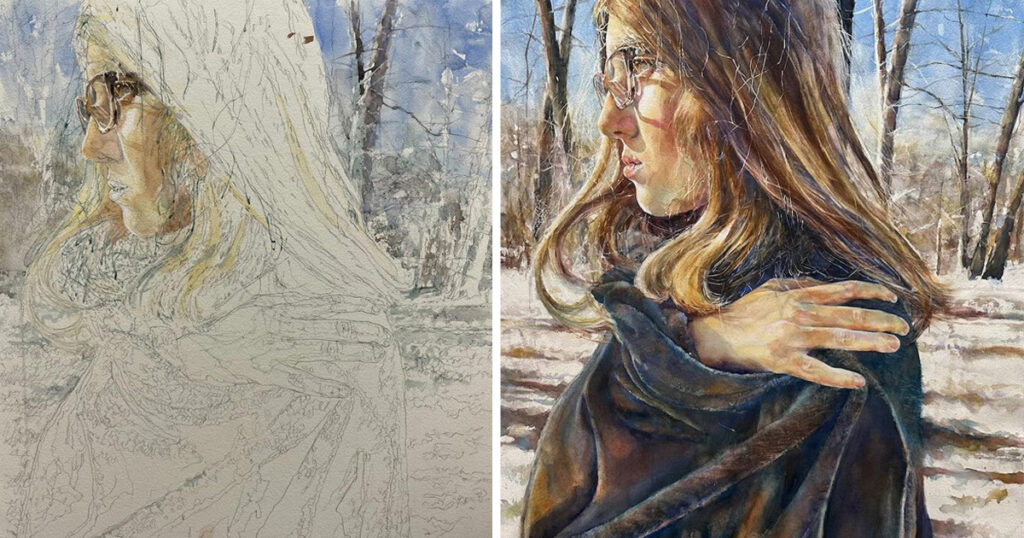Watercolor Demonstration: Painting Flowers

Painting flowers means painting petals. If they all look alike, the flower is not only going to look boring, it also will look flat. To make flowers like these roses appear more lifelike, you need to push some petals back and bring some forward using contrast, shadows or even pure color against slightly grayed color. These create a dynamic of push and pull, appearing to pop some petals forward to the viewer and others back into the background to give roundness to your flower.
Enter your email address for a FREE, instant download on how to draw flowers for beginners:
[fw-capture-inline campaign=”RCLP-confirmation-how-to-draw-flowers” thanks=”Thanks for downloading!” interest=”Art” offer=”https://media2fwpublications.s3.amazonaws.com/NLS/ARNfreemiums/ArtistsNetwork-HowtoDrawFlowers-2015.pdf”]

Step 1: Begin Lightly
Over a light drawing, lay in some light local color to begin finding your shapes. Here some background has been added so the petal shapes are more obvious, but the background is a process best left toward the end of the painting so no darks drift into your light petal areas. Prime and glaze these first shapes with New Gamboge. When this layer is dry, prime and glaze with Quinacridone Rose. Keep the colors separated and the whites preserved by lifting back the color with a thirsty brush if needed.

Step 2: Build Light Glazes
Continue to apply clean, light glazes of either New Gamboge or Quinacridone Rose, finding new shapes and defining more clearly the stamens in the center of the bloom. Use Transparent Brown Oxide to begin deepening the center of the throat of the rose and defining each stamen head.

Step 3: Vary Your Shadow Colors
The shadows on the upper-right petal range from cool green to warm pinks. A variety of color is more interesting than one long passage of a single color. The green shadows help maintain a limited palette and unify this piece with the background. Unusual colors will read correctly to the viewer as long as they are the right values.

Step 4: Deepen Values in Select Areas
Glaze the petals again with a coat of New Gamboge. When this is dry, add a glaze of Quinacridone Rose in the areas where you need deeper values. Placing darker values behind the front petals will push the center forward, and the back petals will begin to recede into the background. As you layer more soft glazes of yellow, the petals will begin to glow. Use Quinacridone Rose plus a bit of Indanthrone Blue to make a darker pink for shadows and veins in the petals. I’ve added a darker background to better show you how the contrast is working.

Step 5: Push and Pull the Petals
Glaze washes of New Gamboge mixed with Quinacridone Gold onto the center area and the lower petals to help push them back. Add layers of Sap Green at the edges of the front petal, deepening the values to anchor the base of the petal back into the flower. Keep your purest white on the front petal to make that area really come toward the viewer.

Step 6: Heighten the Contrast
Under the front petal, deepen the shadows again with a mixture of Quinacridone Rose and Indanthrone Blue. This sets up a high-contrast area of light against dark and pure color against a grayed-down color, which helps to make the flower center pop.
Watercolor painting demonstration by artist Jane Freeman, www.janefreeman.com.
Find more watercolor painting lessons Watercolor Artist magazine–subscribe today!





Have a technical question?
Contact UsJoin the Conversation!